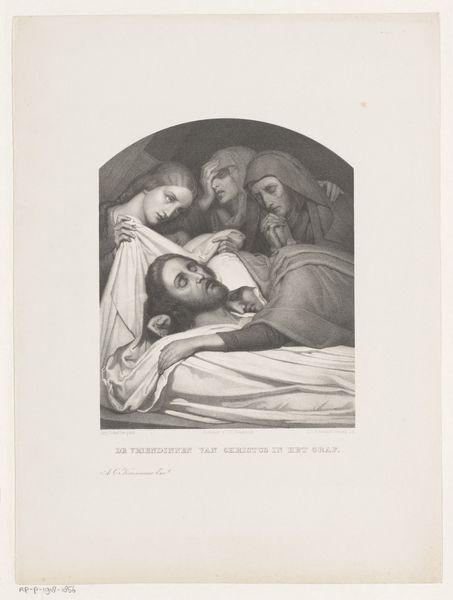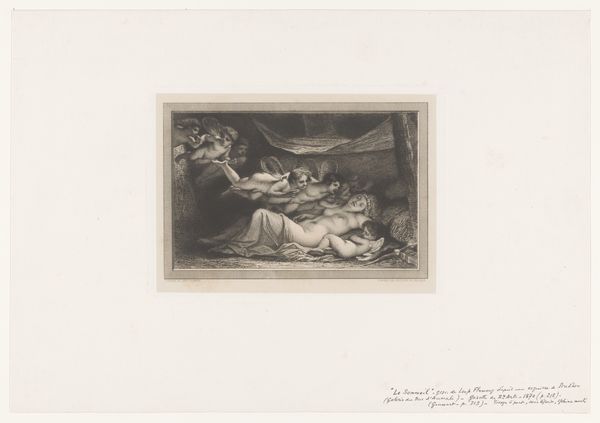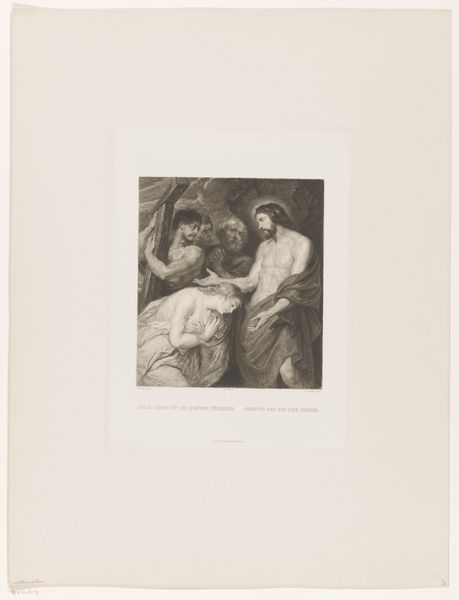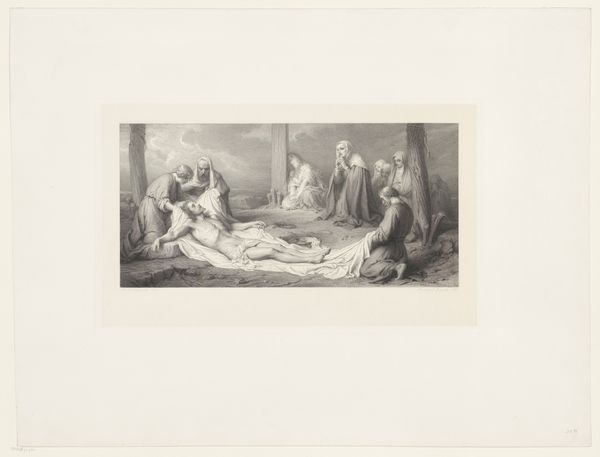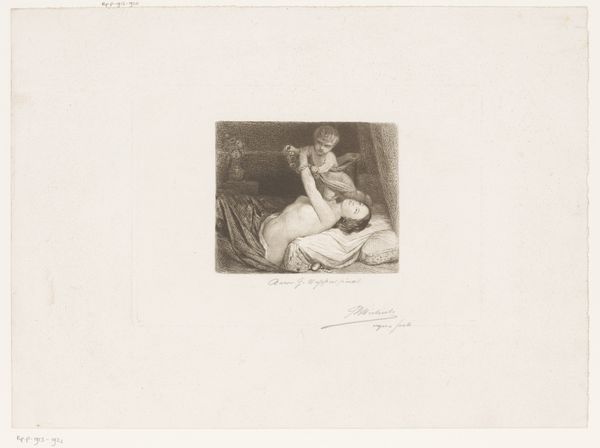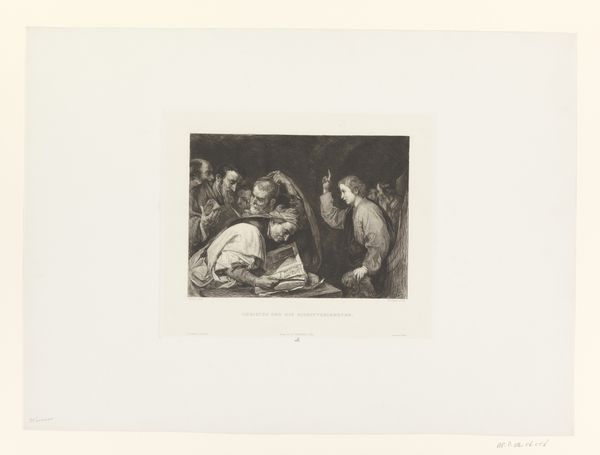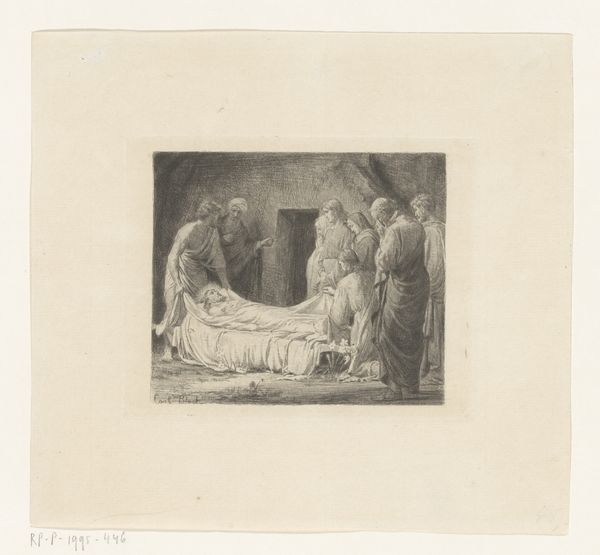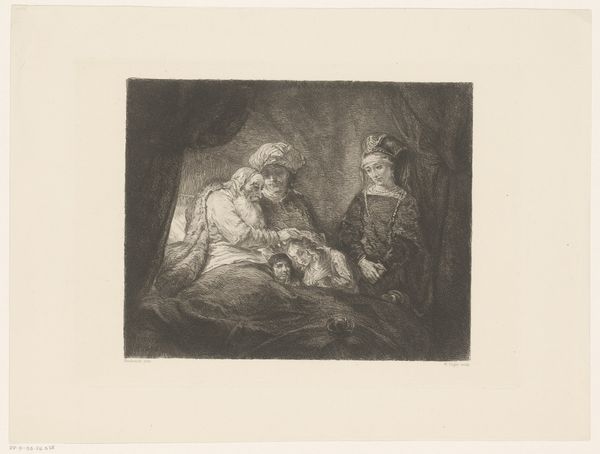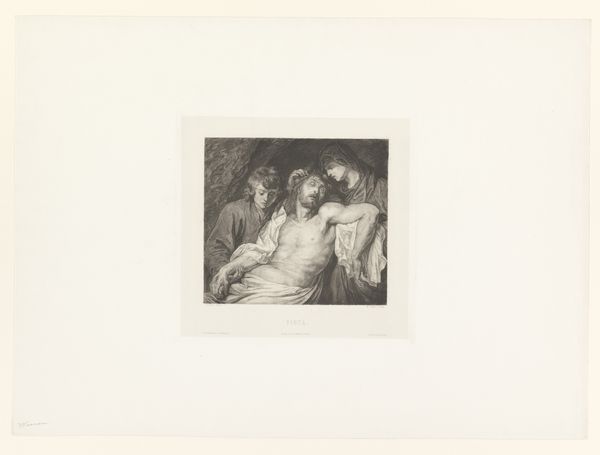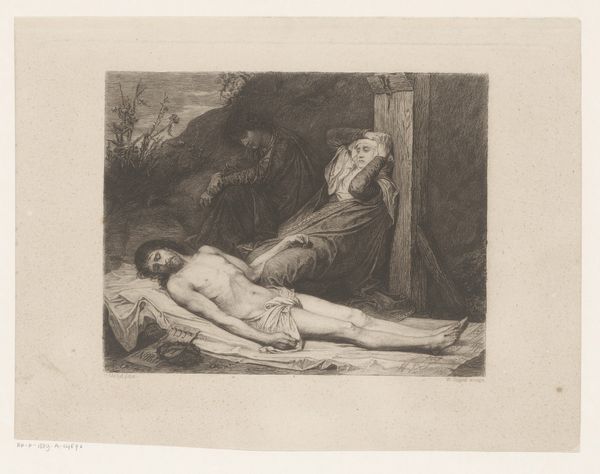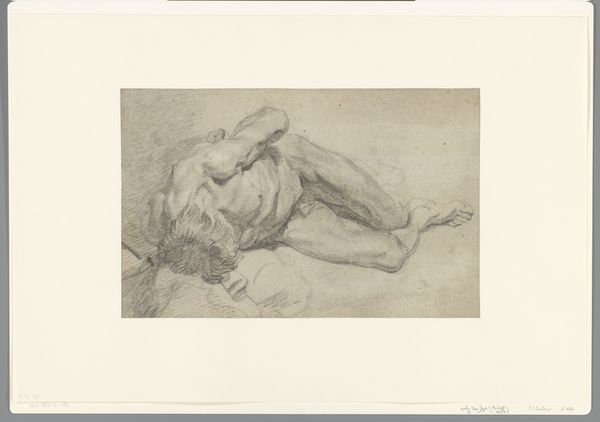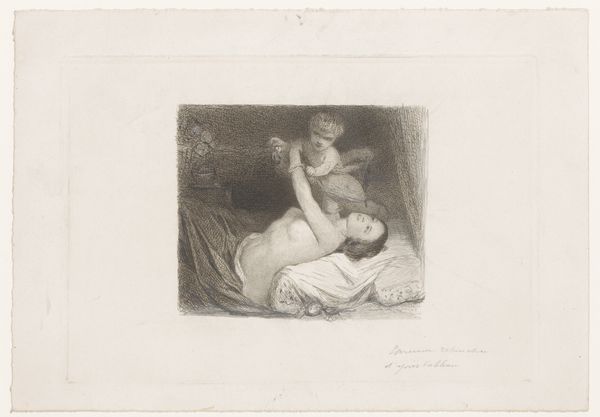
Dimensions: height 94 mm, width 152 mm
Copyright: Rijks Museum: Open Domain
Editor: This is "Bewening van Christus" by Jean Baptiste Pierre Michiels, made sometime between 1831 and 1890. It's an engraving, so the level of detail using simple materials like ink and paper is really incredible. What do you see in the creation of this image, from a material perspective? Curator: I'm immediately drawn to the process itself. Intaglio printing, specifically engraving, demanded immense labor. Think about the repetitive, physically taxing act of incising those lines into the metal plate. How does that impact the meaning, compared to, say, a quickly sketched drawing? Editor: So the labor shapes how we interpret it? The sheer effort involved adds to the gravitas of the scene? Curator: Exactly. Furthermore, prints like this democratized images. They made art accessible to a broader audience. Before photography, how did most people experience visual narratives of religious stories? The materiality of print is intrinsically tied to consumption and the spread of ideas within 19th century European society. What was the social function of the mass produced art? Editor: That makes sense. I hadn’t considered how a relatively inexpensive print could spread a particular version of this story far and wide. I guess I tend to think of prints as secondary to "real" paintings. Curator: This engraving challenges that hierarchy, doesn’t it? Consider the skill and the labor embedded in the *making*. What assumptions do we have about “high” art versus craft, and where did these definitions come from? It's not just the image; it's about understanding its place within systems of production and cultural exchange. Editor: I see. Thinking about the print medium helps connect the image itself to its circulation and cultural role. Thank you for this new way of viewing print art. Curator: It was my pleasure! Always remember to ask who made this, and how it circulated! It changes how you see the art.
Comments
No comments
Be the first to comment and join the conversation on the ultimate creative platform.
